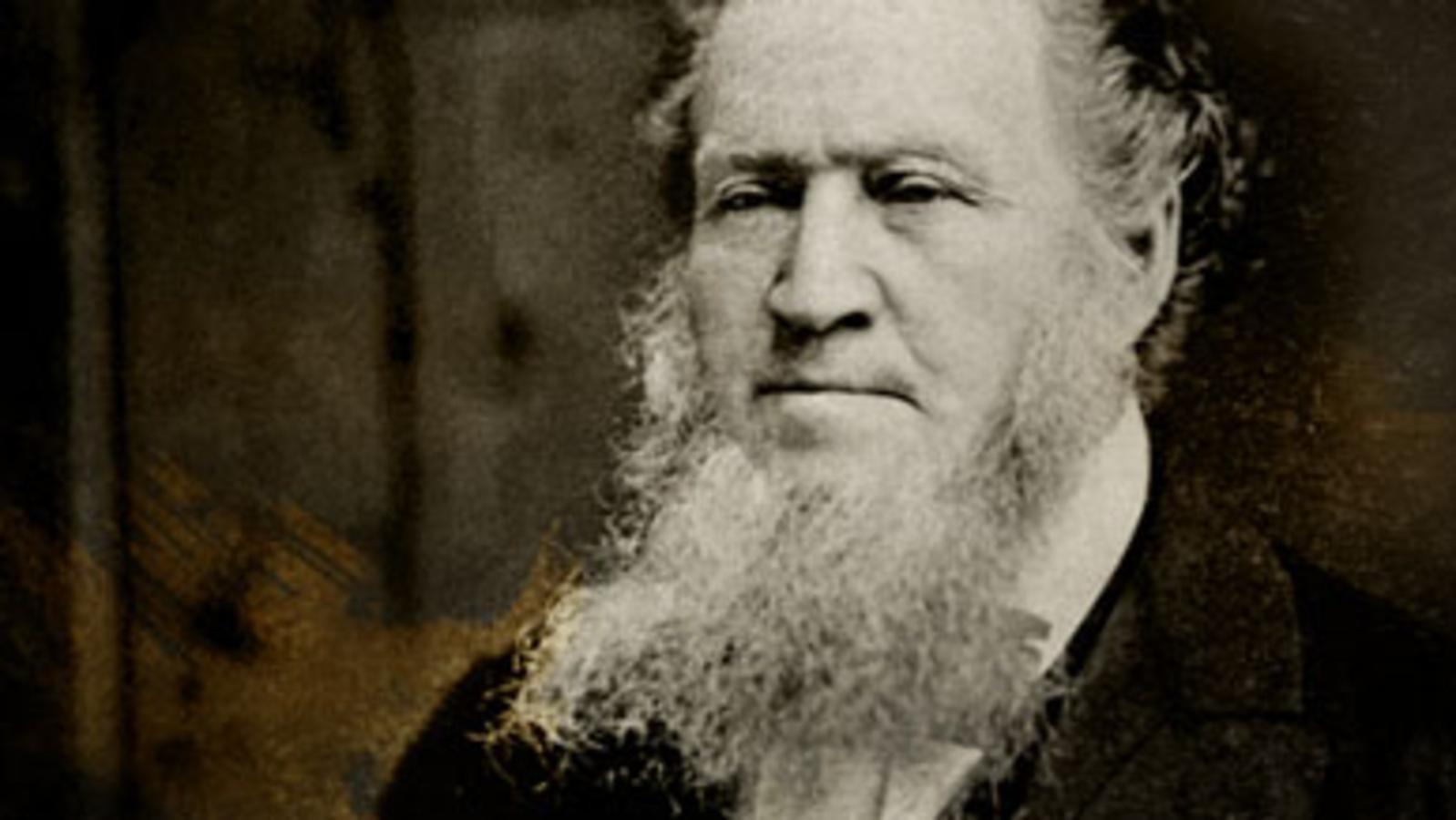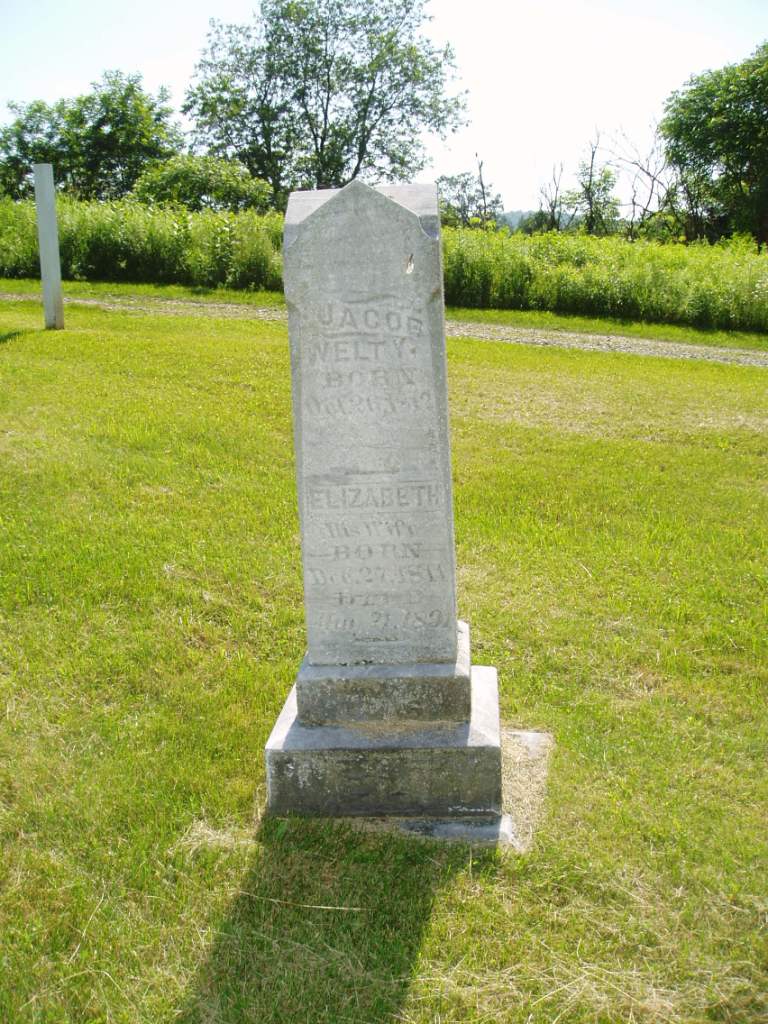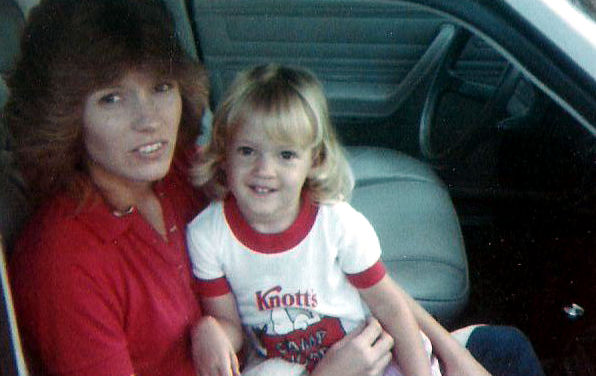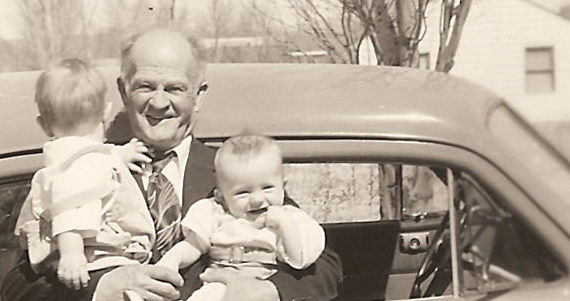Knowing Brigham
I was 17 when I graduated from high school and I had to wait until I was 19 to serve a mission. That gave me a full year to pursue some college.
I vividly recall a freshman history class where a professor during a lecture about the American Indian gave a passing opinion of Brigham Young, calling him “a monster”.
I was shocked.
I had a Sunday School version of Brigham in my mind. I knew him as a prophet.
To hear him called a monster in the context of history stirred me to find out more. I began my own casual study of Brigham Young that year to figure out how he could be considered by anyone to be a monster.
The lesson I learned is that history can be bent to fit just about anyone’s politics.
And I learned the only history you can trust is the history you process on your own.
The same is true of family history.
Brigham Young was a man both reviled and revered – because he had a position that was prominent among thousands of people and because so many recorded what he said and did.
Those who knew him, those who lived near him and those who interacted with him far outweigh his distant critics.
I remain most fascinated by the Brigham Young of the 1840s.
He led the great missionary work of the Church in Great Britain and then came home to defend Joseph – and then led when Joseph was killed.
Brigham was many things but during this decade of his life his accomplishments were staggering.
Historians give Brigham his due for this time frame but I contend the Brigham Young most of the world dwells on is the Brigham who spent the last 30 years of his life in Utah.
And they judge him on things like polygamy alone. In so doing they miss one of the greatest of American stories.
He was outspoken, opinionated, direct and at times seemingly Teflon-coated when it came to his critics.
Brigham was deliciously flawed, ingeniously productive, forever provocative and endlessly fascinating.
He was complex. He was less than perfect – and he knew it.
He was a man, I think, that had I lived in his time I would have followed and admired – just as did many of my family.
Over the years I have read just about everything I can about Brigham.
But I haven’t studied him much in these past five years – a period when my own family history has been central to all my studies.
What I have discovered recently is the colliding of those two worlds – Brigham’s history and our family history.
I find they enrich each other in wonderfully detailed ways.
Truth be told, I think we tend to glorify – or dismiss — the larger figures in history through hero worship or by whitewashing their flaws through hyperinflation of their accomplishments.
Movies are especially guilty of this.
I don’t think I’ve ever seen a film production that portrays Brigham in the way that all the reading about him has developed his character in my mind.
Family history has further tempered that.
Charles Westover, my 4th great uncle and brother to Edwin, once had Brigham stay overnight in his home when he lived with his family in Silver Reef.
Of utmost concern to Charles and his wife Eliza was the validity of their temple sealing.
Charles came west in 1848 with Brigham’s 2nd company, one of 1200 souls who made that trek. On that trek was his mother, Electa, and both brothers Edwin and Oscar. There were other extended family members who also were part of the company.
Charles at that point was unmarried, only 20 years old and he had just joined the Church when he was baptized at Winter Quarters.
Reading Brigham’s history during the years of 1847 and 1848 is fascinating in context of the story of the Westovers at Winter Quarters.
Brigham returned to Winter Quarters with a very clear picture in his mind about the future of the Church. It was there that Brigham re-organized the First Presidency and it was there that Brigham really became the leader – the prophet — of the Church.
So many of our family members were there to witness these proceedings.
Unfortunately, they left no records of their take on those events. They were caught up, as most were, in preparing to leave the next spring for Salt Lake City.
Charles was pressed into service as a teamster by Erastus Snow. This relationship that began at Winter Quarters would last a lifetime. For many years the paths of the Westover family would cross often with Apostle Erastus Snow.
Also part of that massive company was young Eliza Ann Haven, young daughter of John Haven, himself a minor figure in Church history.
The Havens lived for a time in Nauvoo. Eliza was a child during these years.
She recalled in later years the time she spent in Nauvoo. She had vivid memories of Joseph Smith, having had meals with him and seeing him preach.
When she was 12 Eliza Ann was baptized by Brigham Young in the Mississippi river.
Eliza Ann was later among one of the last to receive her temple endowments in the Nauvoo temple.
Eliza, along with her sister, was present at the great Church meeting held in August 1844 when the body of the Church was forced to choose between Sidney Rigdon and Brigham Young to lead the Church.
Eliza left a stirring testimony that she witnessed the image, voice and likeness of Joseph Smith during that meeting in the person of Brigham Young.
I get a bit perturbed when I read critics who dismiss this event.
They note that not one journal of the event from the time that it occurred has ever been found. Not even the exacting detail of Wilford Woodruff’s journals mentions the miracle at the time it happened. All known recorded versions of the event were made years, and in the case of Eliza, decades after it happened.
But Eliza’s version of events was written in her own hand. She conveyed her memory of the event to her son in a letter in 1916 in her own words.
“When he spoke it was the Brother Joseph’s voice. I gave a jump off my seat and said, “Our Prophet Joseph has come to life. We have our President back”. I looked up and there stood Brother Joseph just as plain as I ever saw him when alive. For a minute, I heard Brother Joseph’s voice and saw his features; then a mist seemed to pass from Brother Brigham’s face and go up. Then there stood Brother Brigham talking to us. Hundreds saw the same thing that I did, but not all that were present.”
Did this really happen?
In my mind it matters little. What matters is that Eliza said it happened. She made a record of it and we have her words reliably.
There are those out there who try to take the personal history of ancestors like Eliza and turn them into people they were not.
In my online travels researching Eliza Haven Westover I came across a blog post by a woman claiming to be a great, great, great, great granddaughter.
She used images of Eliza Ann and Charles in her post as well as quotes from some well-known history of the couple.
But woven into the narrative was a story about Eliza Ann I had never heard before.
According to this blog post – and nothing else I have ever read elsewhere before about her – Eliza Ann was allegedly approached by Brigham Young to become one of his plural wives.
This allegedly happened before she met Charles Westover and gleefully the writer of the post claimed “Grandma Westover told this story”, stating that Eliza Ann evidently rebuffed Brigham, saying she wanted her own man.
The writer than claimed to possess the same “in-your-face” characteristics of her Grandma Westover and it was these characteristics that allowed her to defy current prophets who exclude gays from Mormonism.
I believe this story to be false – and a distortion to the memory of Eliza Ann Westover.
There’s no way Brigham could have or would have proposed marriage to Eliza Ann Haven prior to 1848, if ever.
First of all, plural marriage previous to 1848 didn’t happen in this fashion. Older men in the church practicing plural marriage didn’t just willy-nilly hit up young girls.
The Church was not even public with the practice until 1852 and few members of the Church even knew about it.
It was a pretty confidential act at that time and it surely would have involved other key individuals, both in the leadership of the Church and in the families of all parties involved.
But more importantly is the fact the Eliza Ann and Charles Westover were strong members of the Church who kept clear records. I doubt there was an encounter with any Church leader that they didn’t record or share.
Of the many, many known remaining records they left behind there is not one mention of this kind of exchange between Eliza Ann and Brigham Young.
In other words the writer of the blog post, one who claimed to be one of Eliza’s direct descendants – lied.
Whether you’re a college professor or a direct descendant decades later making claims you better be able to back them up.
But that’s not how the dishonest world works and it is exactly this kind of information that makes monsters of people when they are not.
Eliza Ann and Charles first met on the trail – and later they became known as the first couple to be married in Utah in 1849. (I doubt that’s true too. The media of the day reported it that way).
Like many others they were married in Salt Lake but long before there was a temple there. They were sealed, at the hand of Brigham Young, in the home of Erastus Snow.
Years later, as Brigham was planning to spend a night in their home while he was on his way to St. George, Charles and Eliza debated whether to ask him about the need to go to one of the newly constructed temples to have their sealing renewed.
They anxiously looked to each other until the very moment that Brigham was sitting at their table and finally, discerning their anxiety, Brigham asked them what it was they wanted to ask and Charles blurted it out.
Brigham chuckled, waved his hand and over a bite of pot roast said their marriage was more about the priesthood than a temple.
The answer was yes, their temple sealing was perfectly valid and, no, they didn’t need to renew anything in the temple.
These associations with names known now in history were quite familiar at the time for the Westover family.
When Charles took on a plural wife in 1856, he married Mary Shumway – a close friend of his wife, Eliza Ann – in Brigham Young’s office, with Brigham conducting the ceremony.
Years later, it was Brigham who called Charles and Edwin to go to St. George.
The world just wasn’t so large then.
In fact, if you consider just the 1200 people who crossed in Brigham’s 1848 company you can equate that number of people to about three contemporary LDS wards.
Add to those the several hundred that had come to Utah in 1847 you still have less than 3000 people in Utah those first few years – smaller than most stakes today.
Of course they knew each other.
Of course there was interaction. It was a very, very small world.
While reading of the early conversion story of Brigham Young in 1832 I came across the name of Eleazar Miller – a name I had seen somewhere before.
Miller baptized Brigham and was one of the missionaries who taught him.
After some thought, I finally remembered where I had heard that name before.
Miller was the man Electa Westover was sealed to in 1856 during the period of the Mormon Reformation.
She never lived with him and if you look up Eleazar Miller on Family Search you will see that he had many plural wives – and that Electa is not counted as one of them.
I don’t know why that is.
I don’t know what Electa thought of plural marriage.
I do know she was faithful and obedient.
When called to be sealed to other men, Electa did it. When the Saints were encouraged to be re-baptized to show their commitment to the faith, Electa did it. In all things it appears she was true and faithful.
But she never left her sons. And they never abandoned her.
Upon arriving in Salt Lake, as head of the house, Electa was given a lot in Salt Lake and Edwin and Charles set to build her a home before they built their own.
When after four or five years they moved to Cottonwood to farm on larger lots Electa moved with them.
When Edwin and Charles were in Cottonwood they both took on plural wives. Edwin married Ann Findley and Charles married Mary Shumway.
Of course, the world has made much of the 19th century Mormon practice of plural marriage. Everyone, it seems, has an opinion about it.
For some it remains – along with other Mormon practices – something of a stumbling block.
Some try to rationalize it as just their way of life or they assume it was something that just came easy because they were pressured by Brigham Young or others to live that way.
We know from well documented evidence that plural marriage did not work out for many people.
Brigham, in fact, had several failed marriages. Albert Smith, another relative who lived in Manti, also endured a divorce after one wife just could never be satisfied.
But for the Westovers practicing plural marriage it did work out. There were moments, the record shows, where there were difficulties for Charles between his two wives. But the record is likewise clear that Eliza and Mary Shumway remained close for the rest of their lives.
Edwin and his wives – Sarah Jane and Ann – co-existed for over a decade living in the most desperate of circumstances in Southern Utah. When Ann took her children and moved to Mendon it wasn’t to escape the plural marriage arrangement. It was to help family.
As I’ve contemplated plural marriage over the years I’ve long considered myself blessed for not having to live that way. But my contemplation of such a sacred law is not fair in my time and in my age. We just cannot compare our life now to their situation then.
They didn’t have the Internet. They didn’t have scores of ready resources to read and study and ponder.
The people we call family who lived during these pioneer times left all they had, traveled great distances at considerable risk of their lives, and took upon themselves what they considered sacred acts of obedience on faith.
There are huge lessons in all that and the largest comes in our judgment of them. I wouldn’t be too quick to label anyone a monster or others stupid for doing what they did.
Our time is filled with challenges we have been called to endure. From the distant past our ancestors are watching us live out our mortality and face the challenges that are ours. I wonder if they think they could do what we are doing? I wonder if they stand in harsh judgment of us?
Of course, they live now where faith is not the element it is here. They know there is life after death. They have moved on to their next steps in development.
They know things we know not.
But let us remember as well that while we admire them for what made them so faithful they were, in most respects, just as we are.
Reading the journal of Albert Smith I came across this passage from 1883:
“… As I was meditating on the principle of baptism for the dead it comes as though I was surrounded with the spirit of my forefathers opening the principle to my mind, giving me to understand that they were looking to me and my children to attend to those ordinances for them that they cannot attend themselves.
Not only did they open the principle to my mind, but they showed me the necessity of my teaching my children faithfulness and to live that we might be prepared when the temple is finished to go there as well as their brethren and sisters and attend to those ordinances for which the temple is built.
Suffice it to say that I did not sleep all night. It seemed as though they were with me until daylight opening my mind to many things…”
Can you see the connection? Can you see how the chain of family serves, both in this life and in the life to come?
Brigham Young lived to see the St. George Temple dedicated. He said, “What do you suppose the fathers would say if they could speak from the dead? Would they not say, “We have lain here thousands of years, here in this prison house, waiting for this dispensation to come?” … What would they whisper in our ears? Why, if they had the power the very thunders of heaven would be in our ears, if we could realize the importance of the work we are engaged in.”
Charles was there. Eliza was there. Edwin was there. Electa was there.
After all, they knew Brigham.
And they shared with Brigham a vision for their future family…and of their past family.





